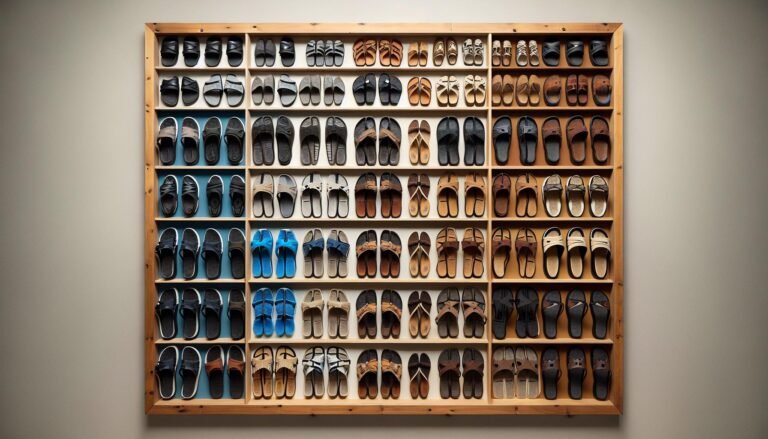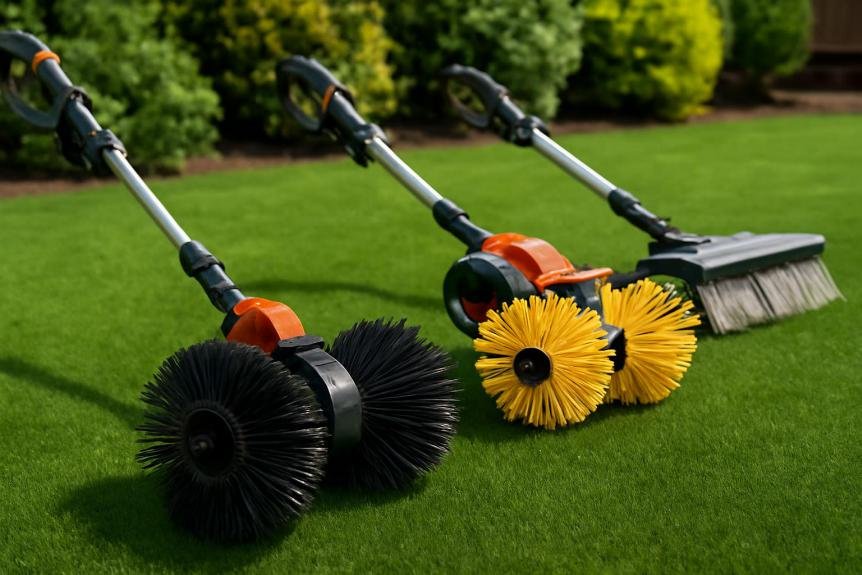Prevent Dry Rot: Top Tips to Keep Your Shoes Pristine
Ever found your favorite pair of shoes crumbled and cracked after being stored away? That’s the dreaded dry rot! I’ve been there, and trust me, it’s not just disappointing—it’s totally preventable. I’m here to share some insider tips on how to keep your shoes in tip-top shape for years to come.
What is dry rot?
When talking about keeping shoes in peak condition, understanding what dry rot is becomes essential. Dry rot, contrary to its name, isn’t caused by dryness. In fact, it’s a type of decay that happens because of a fungal infection in materials like leather, canvas, and rubber when they’re exposed to moisture over time. This pesky fungus thrives in environments that are warm and damp, which makes neglected closets or shoeboxes excellent breeding grounds.
To identify dry rot in shoes, I’ll look for tell-tale signs such as a brittle texture, crumbling material, disintegration, or even a musty odor. It’s a heartbreaking sight, especially if it attacks a favorite pair of shoes. The damage from dry rot can be so extensive that it’s often irreparable, leaving me no choice but to throw away the affected footwear.
The science behind dry rot is as fascinating as it is frustrating. The fungi responsible are part of the Serpula lacrymans species, and they digest parts of the material that normally give strength and resilience to the fabric or leather. Over time, the integrity of the shoe material diminishes, leading to the crumbly wreckage that we call dry rot.
In leather shoes, the natural oils play a vital role in keeping the material flexible and strong. Once these oils are depleted, and moisture sneaks in, the countdown to dry rot begins. For rubber-soled shoes, the process is somewhat different but the outcome is the same. The rubber loses its elasticity and starts to crack and crumble. This degenerative process is accelerated by factors such as poor storage conditions and infrequent use.
Recognizing the early signs of dry rot in shoes can save me not only my favorite pair of kicks but also a significant amount of money in the long run. It’s worth noting that the occurrence of dry rot doesn’t imply negligence; even the most diligent shoe care routine could fall victim to this stubborn fungus under the right conditions.
Understanding the causes of dry rot
Recognizing why shoes degrade is critical for preventing dry rot. At its core, dry rot is a byproduct of fungus, which thrives in moist environments. Here’s what you need to know:
High Humidity: If my shoes are stored in a place where humidity levels are consistently high, it’s practically an open invitation for the fungi that cause dry rot to take up residence. This is because fungi require moisture to grow, and humid conditions provide that necessary dampness.
Poor Ventilation: Just as crucial as humidity is the flow of air around my shoes. Closets or storage boxes with little to no airflow create the perfect stagnant environment for fungi to flourish. This lack of air movement also helps retain moisture, further promoting fungal growth.
Temperature Fluctuations: Rapid changes in temperature can cause condensation inside of shoe storage areas, exposing the shoes to moisture which can lead to dry rot. Keeping my shoes in a temperature-stable area helps reduce this risk significantly.
Direct Contact with Water: Not surprisingly, shoes that are regularly exposed to water without time to dry out will quickly become victims of dry rot. Even after wading through a puddle, it’s imperative to dry my shoes out completely.
Storage in Dark Places: Darkness doesn’t just make it hard to find my favorite pair of shoes; it also increases the likelihood of fungal growth. The combination of darkness, moisture, and poor air circulation creates an environment where dry rot fungi can thrive unseen.
To minimize the risks of these dry rot causes, I consistently monitor the storage environment of my shoes. Let’s break down preventive practices that can help keep your shoes free from this unwelcome deterioration. With the right strategies in place, your cherished footwear can stand the test of time and resist the ravages of dry rot.
Next, I’ll detail specific steps that anyone can implement to safeguard their shoes, ensuring that they remain resilient against the conditions that foster dry rot.
How to prevent dry rot in shoes
Taking proactive steps to prevent dry rot in shoes can save you both money and heartache. From personal experience and extensive research, I’ve pinpointed several key strategies that’ll help keep your shoes in pristine condition.
Maintain Proper Humidity Levels
First and foremost, controlling the humidity where your shoes are stored is critical. I recommend maintaining a relative humidity (RH) of between 40% and 60%, as this range is generally hostile to dry rot fungi. Using a dehumidifier or silica gel packets within the storage area can work wonders in achieving this balance.
Optimize Air Circulation
Next up, ensure that the storage area has adequate ventilation. Poor ventilation creates a breeding ground for fungi, so it’s vital to keep the air moving. I often encourage shoe enthusiasts to store their footwear in well-ventilated closets or to leave the door slightly ajar to promote airflow.
Avoid Temperature Extremes
Regular temperature checks can also be a game-changer. Sudden fluctuations can cause condensation which, in turn, may lead to dry rot. Strive to keep your shoe storage area at a constant temperature, ideally between 68°F and 77°F (20°C and 25°C).
Keep Shoes Dry
It may seem obvious, but ensuring your shoes are completely dry before storing them is non-negotiable. After cleaning, I always give my shoes ample time to air dry, away from direct heat sources which can degrade the materials and adhesives.
Properly Condition Leather Shoes
For leather shoes specifically, regular conditioning is a must. The right conditioner not only rejuvenates the leather but also acts as a protective barrier, preventing cracks that dry rot fungi could exploit.
Store Shoes with Care
Finally, consider how you’re physically storing your shoes. Avoid piling them on top of one another or in cramped quarters. Use shoe trees or stuffing to maintain their shape, which also helps mitigate any internal moisture buildup.
By implementing these practices, I’m confident that you can significantly reduce the risk of dry rot and extend the lifespan of your footwear. Remember, it’s not just about preserving shoes; it’s about preserving memories and the investments you’ve made in your wardrobe.
Choosing the right storage method
Proper storage is crucial in preventing dry rot in shoes. It’s not just about where you put them; it’s how you store them that counts. When picking a spot for my favorite pairs, I always seek out options that provide a stable environment free from humidity.
I’ve found that plastic containers with lids can be a great option if ventilation is accounted for. Small holes drilled into containers offer that much-needed air circulation without exposing shoes to dust or pests. For added protection, silica gel packets tossed inside can help keep moisture levels down.
Here’s a tip I always share: avoid stacking shoes directly on top of each other. Instead, use shelving or racks that allow air to flow around each pair. This also prevents any warping or deformation that might occur from piling them up.
When it comes to storing boots or more structured shoes, inserts or shoetrees are a must. They help maintain the shape of the footwear and prevent creases, which can be vulnerable spots for dry rot to set in.
For those who prefer a more natural approach, cotton shoe bags can be an excellent alternative to plastic containers. They’re breathable and still provide protection from dirt. Always clean shoes thoroughly before slipping them into these bags to ensure there’s no trapped moisture or soil that might encourage rot.
I’ve compiled a quick reference for effective shoe storage solutions:
- Plastic containers with ventilation holes
- Shelving or racks for easy access and air circulation
- Shoe inserts or shoetrees to maintain shape
- Cotton shoe bags for a breathable option
By being selective in choosing the right storage methods, you’re taking a proactive step in safeguarding your shoes from dry rot. It’s about making smart choices that align with the needs of different materials and shoe types to ensure they stay in top condition for years to come.
Regular maintenance and care
Beyond selecting the right storage solutions, consistent maintenance plays a crucial role in preventing dry rot in shoes. I’ve learned that regularly checking for signs of wear and degradation can save shoes from an early demise. Just like any other valuable item around your home, shoes require attention and care to extend their useful life.
For leather shoes, conditioning them every few months with a suitable leather conditioner is essential. This keeps the leather supple and prevents cracking, which could lead to dry rot. Furthermore, always clean dirt and debris off your shoes after wearing them; soil can retain moisture and contribute to the breakdown of the material.
If you’re dealing with canvas or fabric shoes, they often benefit from less frequent washes. When it’s time to clean them, opt for hand washing with a gentle detergent and air dry thoroughly before placing them back into storage. Machine washing and drying can be harsh on the fabrics, leading to premature wear and tear.
Here’s what I’ll typically do to keep my shoes in top shape:
- Clean shoes with a soft brush to remove dirt.
- Apply conditioner or polish for leather shoes.
- Use a gentle detergent for canvas shoes.
- Dry shoes completely before storing.
- Inspect shoes regularly for any damage.
Remember, each material may have its specific care instructions, so always check the manufacturer’s recommendations. For athletic shoes, avoid excessive moisture and direct heat. Instead, let them air dry naturally and toss in some baking soda to combat odors and absorb residual moisture that could potentially cause dry rot.
It’s not just about how you store your shoes, but also about how you treat them on a daily basis. Taking the time to provide proper care will ensure that your shoes remain comfortable, stylish, and most importantly, free from the damaging effects of dry rot for as long as possible.
Conclusion
I’ve shared some key strategies to keep your shoes in top-notch condition and prevent dry rot. Remember, it’s all about maintaining the right environment and giving your shoes the TLC they deserve. With regular maintenance and the right storage, you’ll extend the life of your footwear significantly. Treat your shoes well and they’ll return the favor, staying stylish and comfortable for years to come. Keep up with the care tips I’ve outlined and you’ll say goodbye to dry rot for good.












[…] drying techniques and shape maintenance are crucial for extending the life of moccasins. It ensures they not only look good and wear, but […]